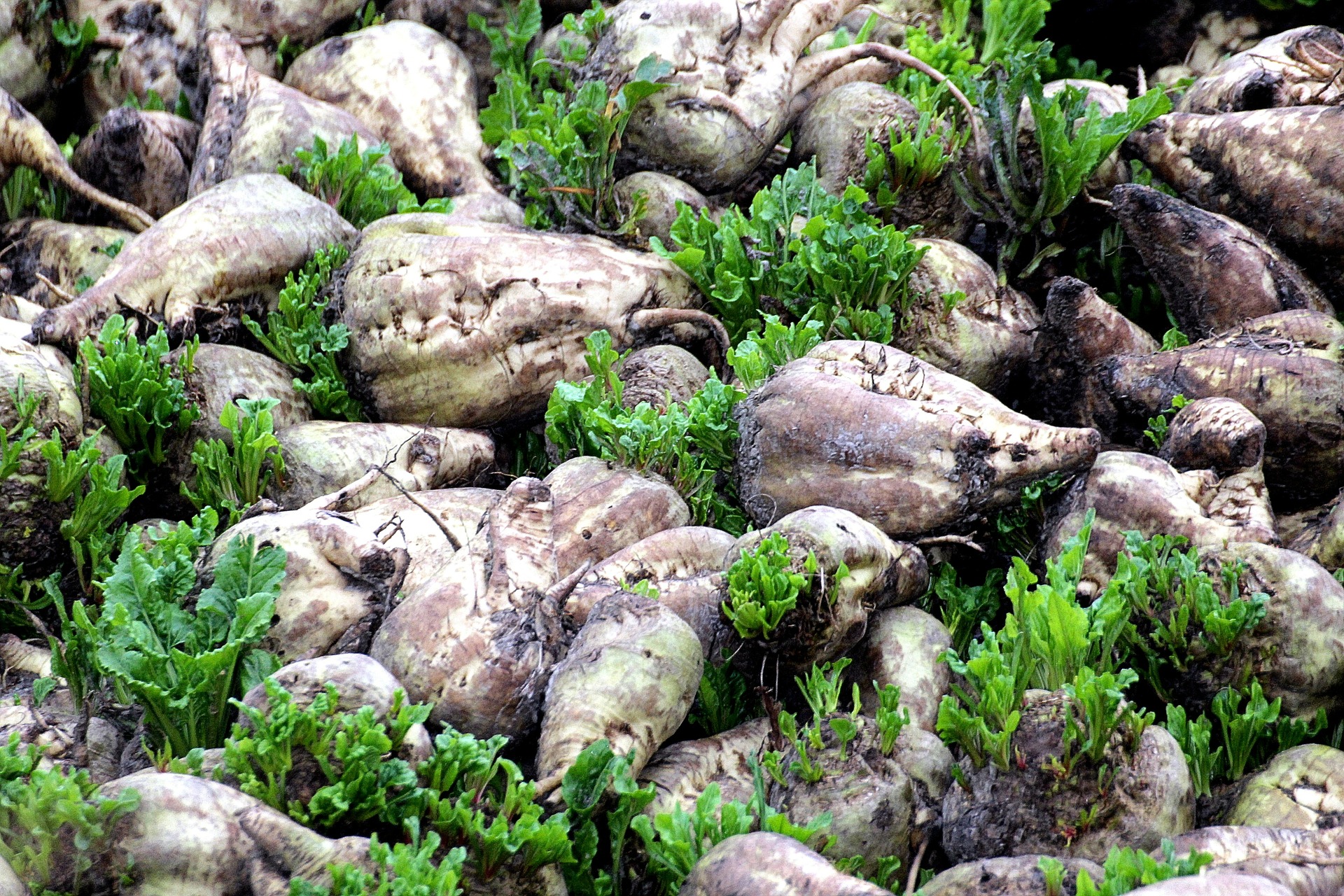Fodder Beet

Despite the benefits of feeding fodder beet, there are a number of animal health issues to be aware of.
Fodder beet (FB) is a highly palatable, very digestible crop which has increased in popularity on Scottish farms over the past few years as a livestock feed. The crop is often utilised in situ with the leaf tops containing higher levels of protein and macro-minerals (calcium and phosphorus) compared to the bulbs which contain a high sugar content. A well-planned transition period to allow cattle to get used to eating the crop, which typically is fed behind an electric fence, is vital. There are several animal health issues to be aware of if your farm clients are considering feeding FB. All these issues are related to the mismanagement of the transition period.
Acidosis
FB bulbs contains a very high content of rapidly available sugar, up to 50 percent of its dry matter (DM) by weight is sucrose and, they are a very low DM forage, so there is a high-water content encouraging a fast rumen passage rate. It is rare to see acidosis on the first few days of transition, as the cattle are in the process of learning how to eat it. They use their incisors to “mouth the bulb”, they must learn to chip away at them. Intakes are therefore reduced at the start and the cases of acidosis are most always seen on days seven to ten days of transition when intakes are higher. Typically, only ten to fifteen percent of the mob will be affected, the worse ones will be in sternal recumbency, the others often ataxic/wobbly. Rumen pH in these animals is often in the range of 4.7 to 4.9. The acidosis causes rumen stasis, and hence low calcium levels. Work in New Zealand (NZ) has shown that oral drench products traditional used to treat starch-based acidosis cases are often ineffective. These cases are almost an atypical milk fever (MF) and the best course of action is to provide the down cows with calcium borogluconate under the skin. More importantly, clinical cases are seen due to an over-allocation of FB in the transition period and the mob should be pulled back to 75% of yesterday’s FB allocation and fed additional supplemental feeds.
Clostridial Diseases
The most common problem encountered is a clostridial perfringens type D ('pulpy kidney') overgrowth in the small intestine. When cattle achieve maximum intakes (three to four weeks on FB beyond transition), more sugar is washed out of the rumen rather than converted within the rumen, and in combination with the high-water flows, there is a risk of a clostridial overgrowth. Clostridial spores can also be found in soil leading to intakes being higher than with other feedstuffs. Sporadic sudden deaths can therefore occur. It is highly recommended that all stock to be grazed on FB should be fully vaccinated against clostridial diseases. It is not uncommon for younger cattle (weaners) or hoggs/lambs to encounter sudden death almost immediately when first transitioned onto FB.
Listeriosis
As soil intakes are higher on FB, and well transitioned cattle can have high FB daily intakes, very rare cases of listeriosis can be seen.
Trace Elements
Requirements for copper, selenium, iodine, zinc are important, especially in the younger growing animals. Copper can be affected if the soil has high molybdenum levels, leading to the production in the rumen of insoluble complexes that bind with copper and sulphur. Also, if there are high iron intakes with the soil, this can cause similar issues. Routine trace element monitoring is recommended, and any deficiencies corrected whilst grazing FB.
Phosphorus Deficiency
If the FB crops has been agronomically challenged in the growing season and the leaves have died back, the leaf’s mineral levels are low. Phosphorus (P) deficiency can be seen in high producing dairy cows grazing FB, with higher incidents of MF (10% of herd). Down cows present as typical 'creeper cows' that are bright, hard to administer calcium too, and respond poorly to it. Feeding an additional phosphorus supplement (such as di-calcium phosphate) at a rate of 50g/cow/day gives 9g of elemental P and helps eliminates the problem. Beef cows fed FB very rarely shows similar MF signs, poor FB intakes are the issue here leading to poor daily liveweight gains. This issue is always preventable with good crop agronomy.
Choke
This is very occasionally seen in cattle and never sheep. Again, it is an issue of low FB bulb size in poorly established crops and is not seen in well grown FB fields. Cattle learn to knock the bulb over, then eat the middle and the bottom of bulb, leaving the crowns for later which they chew with their molars. If there are small crowns available (less than 1.5" diameter) occasionally these will not get chewed properly and lead to choke cases. Prevention here is to manage transition well and provide optimal agronomy to the growing crop
There are some superb resources on the FAS website from Dr Jim Gibbs a veterinary surgeon, ruminant nutritionist and FB expert from NZ. Further details: Fodder Beet | Helping farmers in Scotland
Posted by SRUC Veterinary Services on 04/11/2021
